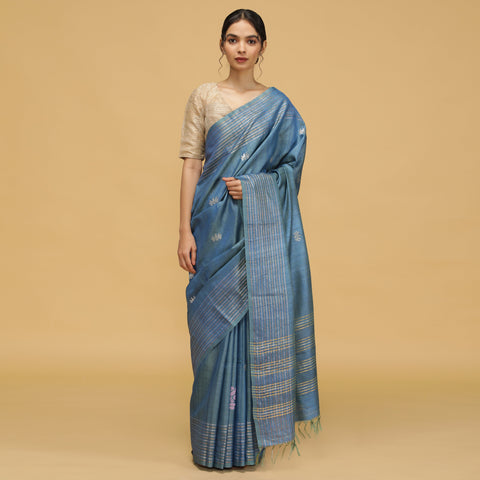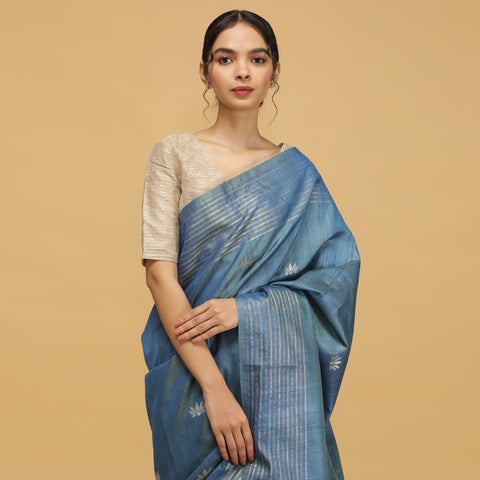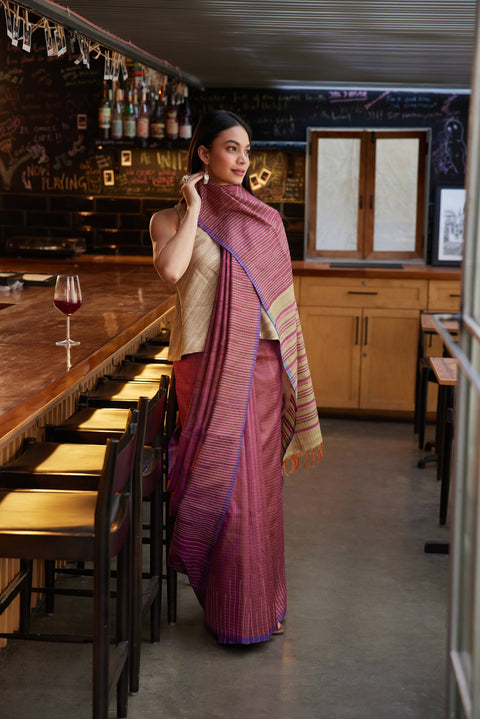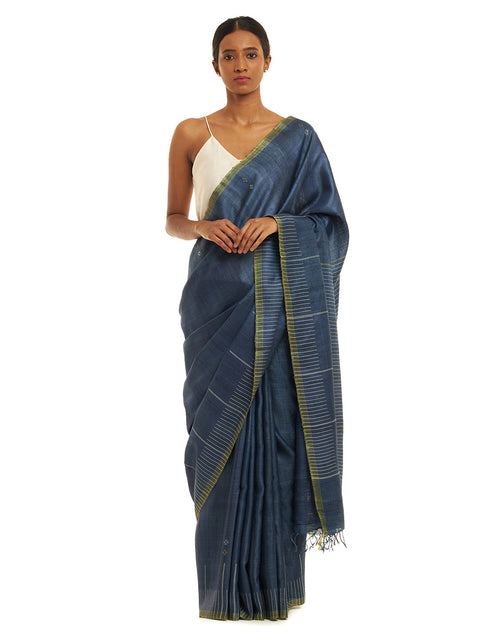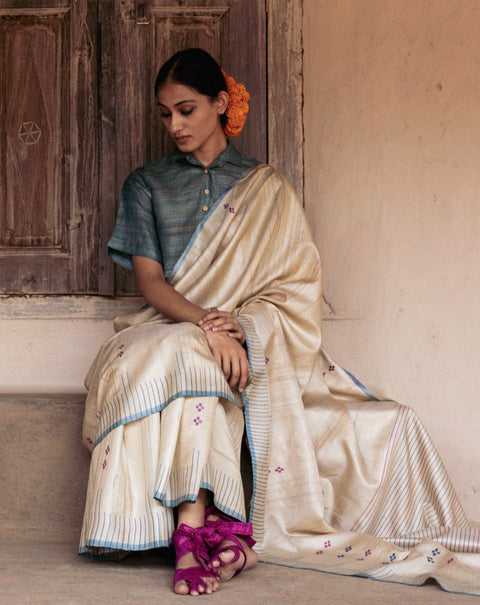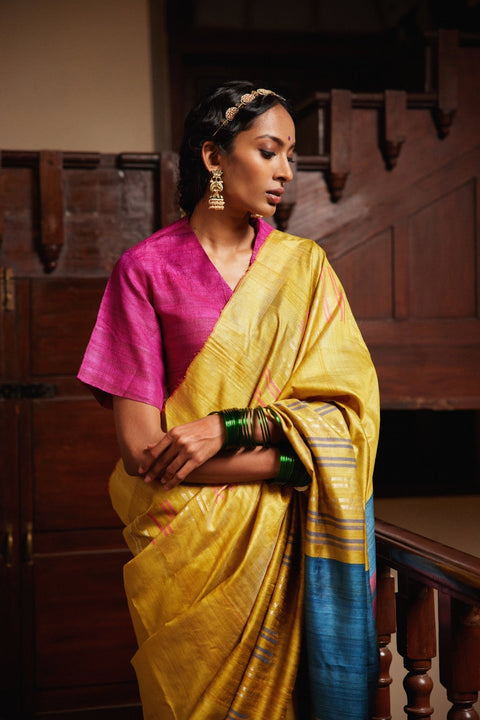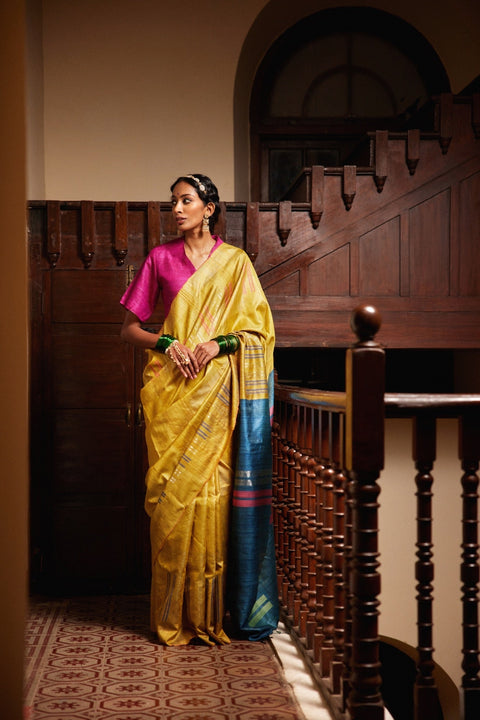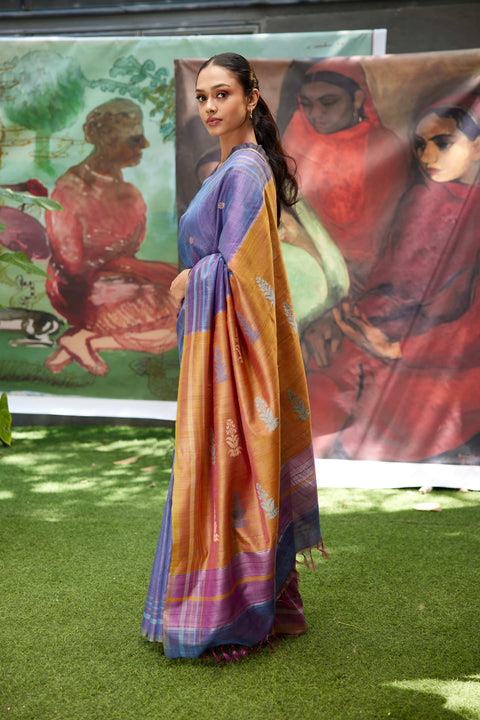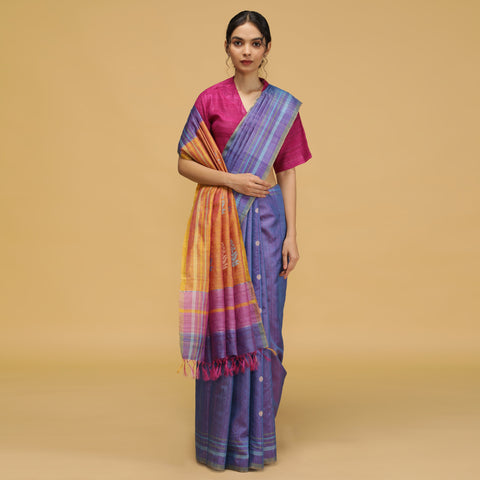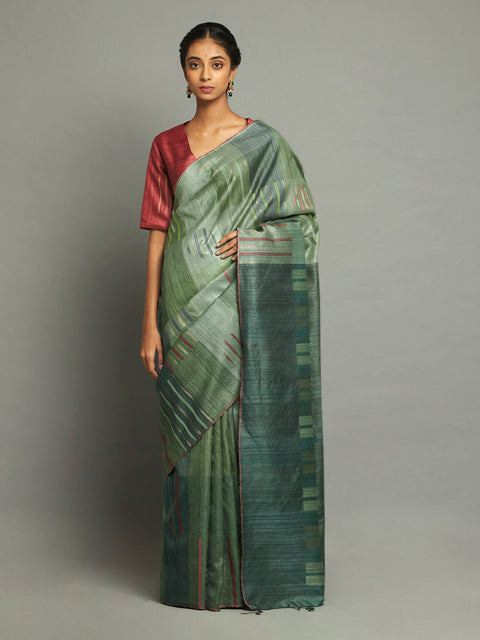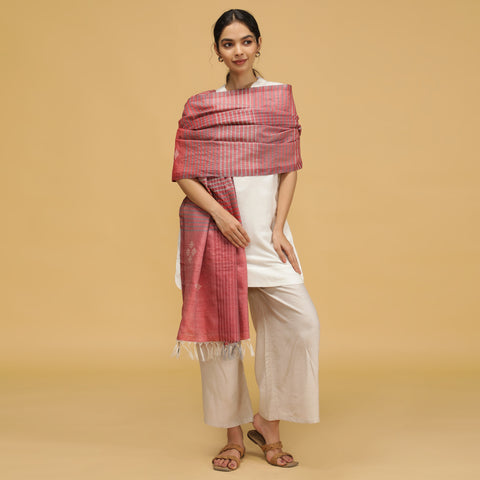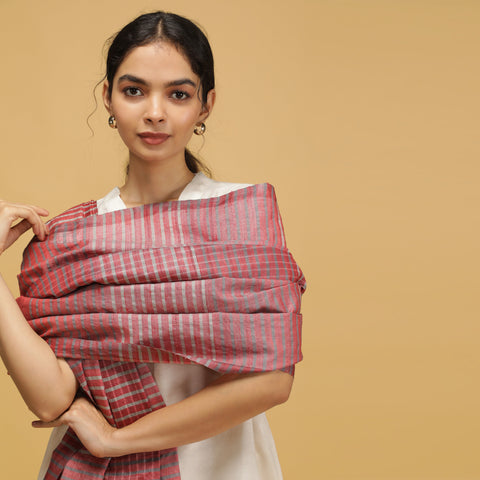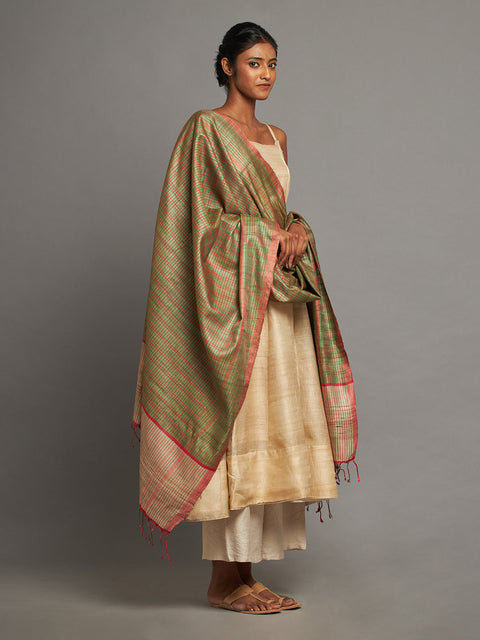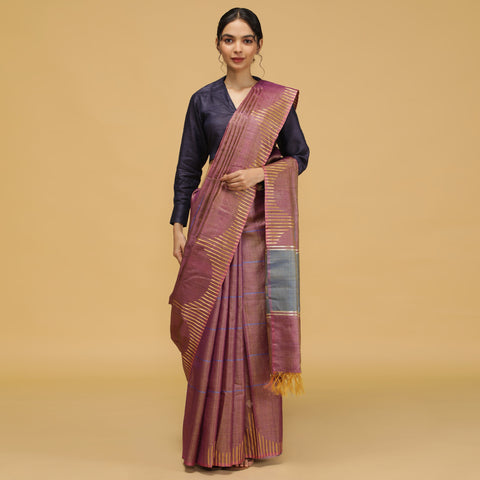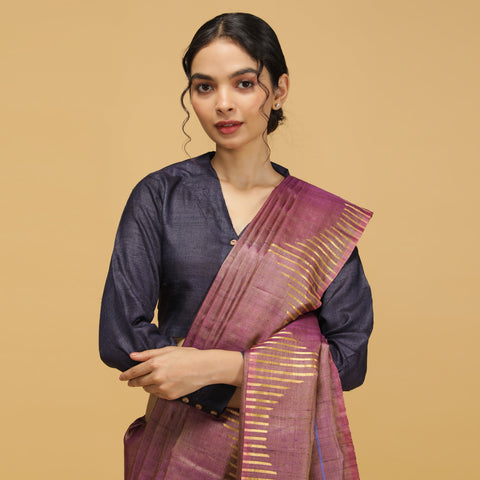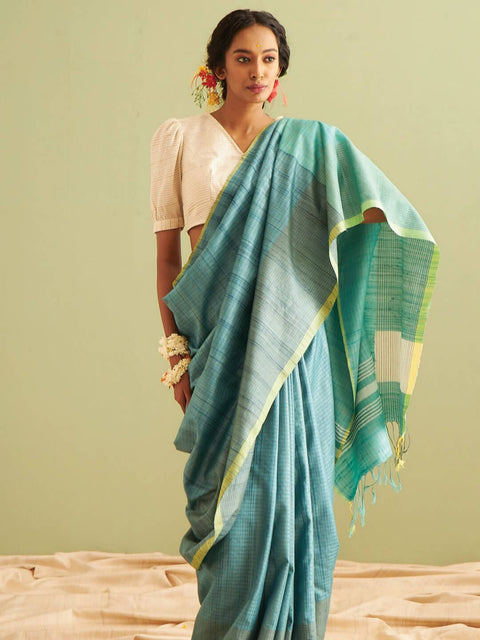
Table of Contents
Tussar Silk Origin: Why Handloom Always Wins

Table of Contents
Tussar silk has a story as rich as its texture. Known for its earthy sheen and unique weave, it has long been treasured across India. But not all Tussar silks feel the same. Some drape like poetry, while others feel lifeless.
To understand why, you first need to know the tussar silk origin and why handloom will always outshine machine-made.
The Tussar Silk Origin
The tussar silk origin traces back to wild silkworms found in forests of Jharkhand, Chhattisgarh, and parts of West Bengal. Unlike mulberry silk, these worms thrive on leaves like asan and arjun, giving Tussar its raw, textured character.
This natural process means no two sarees are ever alike. Every thread carries a piece of its forest roots, making the tussar silk origin inseparable from the authenticity and beauty of the fabric.
The Soul of Handloom Tussar
When artisans weave by hand, they preserve the true tussar silk origin. The uneven slubs, the textured drape, the way the fabric breathes, these are hallmarks of its natural story.
Hand-loomed tussar silk does not seek perfection. Instead, it celebrates its forest origins and the craftsmen who made it. While machine-made silks may be visually consistent, the essence of tussar silk and its story is lost in the process.
The Machine-Made Illusion
The machine-made Tussar at first glance seems perfect: smooth finish, shiny gloss finish, and predictable shine. But perfection here seems to be hollow. The fabric does not flow, does not breathe, and does not reflect the depth of the bygone era.
When the soul of the tussar silk origin fabric is forgotten, what’s left is just fabric, not heritage.
How to Spot the Real Thing
The burn test is one of the simplest and oldest ways to prove authenticity. Burn a bit of thread of real Tussar, and it smells like burnt hair. The flame is invisible and extinguishes right after it burns, turning to brittle black ash.
This test is seamless and irreversible, completely tethered to the tussar silk origin, and unlike any machine-made imitation.
The Quiet Power of Simplicity
Tussar does not need heavy embellishments to shine. Even plain tussar silk sarees radiate elegance. Their subtle sheen makes them perfect for both intimate and grand occasions. Styled with bold blouses or delicate jewelry, they easily outshine mass-produced pieces.
Beyond Six Yards
The allure of tussar silk transcends sarees. A tussar silk stole for woman can elevate even the simplest of kurtas. It’s understated luxury, light to drape, yet rich with tradition. Such is the versatility of the handloom: deeply anchored in heritage, yet fitting in wardrobes of today.
Sustainability and Legacy
Upholding the source of tussar silk supports the practice of eco-friendly fashion. Handloom weaving is resource-efficient, sustains artisan communities, and perpetuates weaving for generations.
Tussar silk has its own place and character among the finest Indian textiles: Banarasi and Kanjeevaram sarees, and handloom silk sarees. It does not demand the spotlight. It is beautifully understated, effortlessly elegant, and wonderfully earthy.
The Bottom Line
Weaving a fabric tells a story, and machines don’t weave stories. The tussar silk heirloom tells the journey of the fabric, and the tussar silk origin is embedded within it. Mass-produced fabrics try to imitate a polished finish, but they lack soul, character, and history.
If it is your first piece, let it be handloom. Drape yourself in tussar silk, and it is not just a saree; it is the artistry of so many hands, the history of Indian forests, and the artistry of so many hands.
Grace and soul will always shine brighter than a machine.




